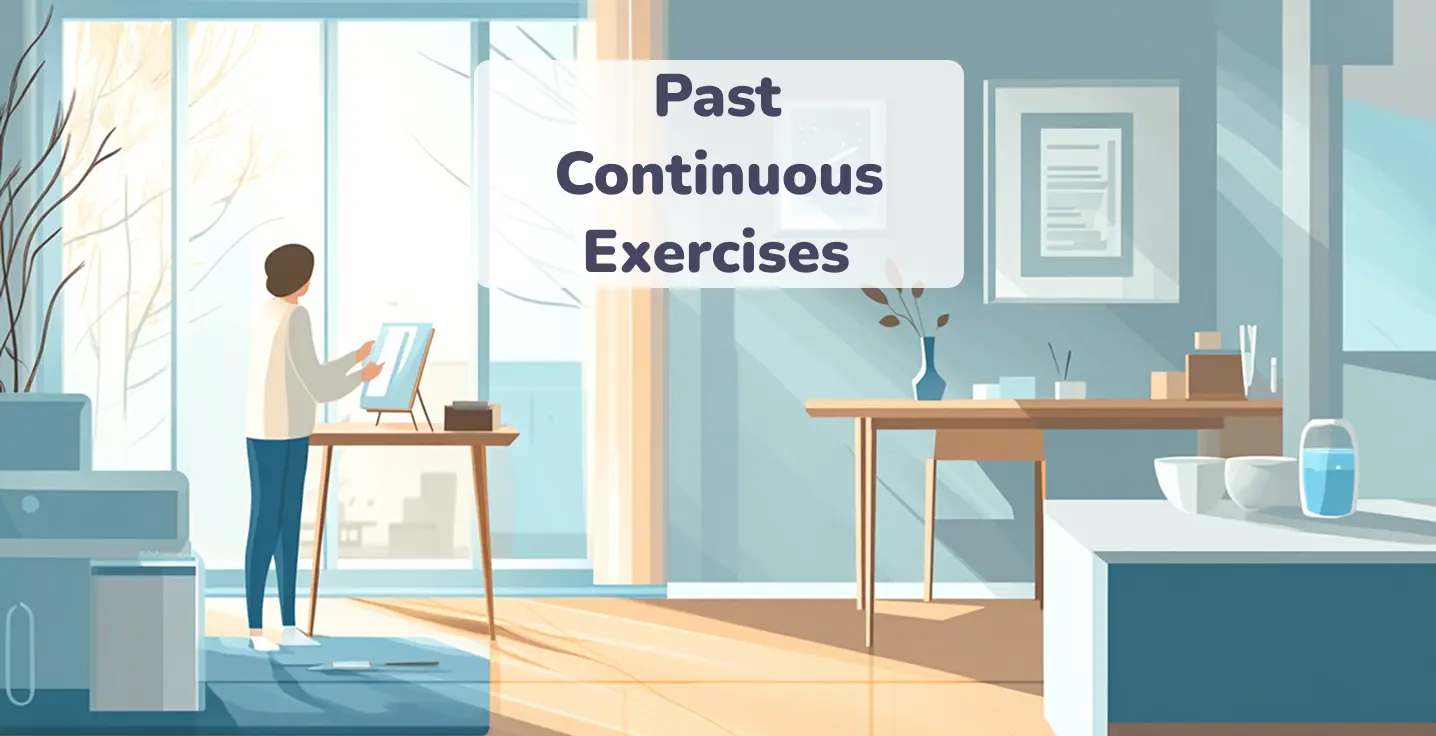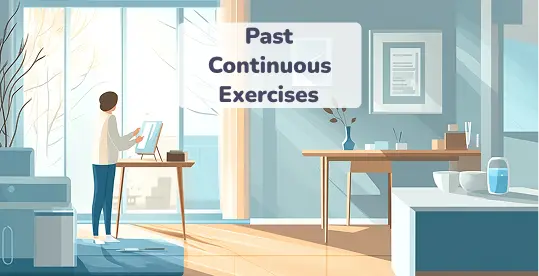Past Continuous exercises
What are the most effective Past Continuous tense exercises?
Read further to uncover drills that will enable you to memorize the grammar rules quickly and use the tense faster:
-
Mixed tense gap-fill. Since the Past Continuous tense is used to describe shorter actions written in the Past Simple that interrupt longer actions created in the Past Progressive, it is important to recognize both parts and form them correctly, like this:
My phone ___ (fall) when I ___ (run) yesterday.
Correct answer:
My phonefell when Iwas running yesterday. - Matching exercises. A Past Continuous quiz that has two particles boosts familiarity with possible variations of the tense usage with the context in the center:
- I was watching TV
- They were walking
- a) while my children were playing with their toys.
- b) when Danny fell and broke his leg.
Correct answers:
Iwas watching TV while my childrenwere playing with their toys.Theywere walking when Danny fell and broke his leg. -
Word order. As the tense has a strict word order, you need to practice it with exercises for Past Continuous to convey the right thoughts, because even one misplaced word can change the meaning of a sentence:
Before:
was/ I / waiting / when / for / my / you / sister / me / called
After:
Iwas waiting for my sister when you called me.
-
Describing events. When you practice the structure enough by passing Past Continuous tense exercises with answers, try to complete writing activities with prompts to speak about past events using the tense. Describe what you and your family were doing yesterday at 7 p.m:
The answer:
Yesterday at 7 p.m., Iwas cooking dinner. My sisterwas reading a book while our parentswere discussing the news.
You can find various drills on our platform, Koto English. Learn English in an entertaining way owing to the gamified elements, tournaments, and rewards.
How to check your progress after doing the Past Continuous tense test?
Are you studying, and do you want to know if there is any improvement? The following tips will equip you to analyze the effectiveness of your approach:
Tip 1: Inspect your answers.
When you finish the Past Continuous questions exercises, read them carefully and determine whether you have made mistakes in your completed tasks.
Tip 2: Try to identify the patterns of errors.
Our Past Continuous exercises with answers will give immediate feedback on your results. Scan the tests to find the common mistakes that happen more frequently than others and work on them.
Tip 3: Use the Past Continuous in practice.
Try to write or spell your sentences using the target tense. Creating them will be the most significant proof of your progress.
Our platform, Koto English, will make it simple to follow the grammar rules and perfect their usage with activities based on real-life situations.
How to use the Past Continuous practice to boost your writing skills?
Below, we covered the approaches that will give you the ability to refine your writing:
Advice № 1: Add details to your stories
Your writing will be on the next level if you describe extra points, such as what you were doing when something happened. Example:
Advice № 2: Include background information
The Past Continuous grammar exercises support you in setting a scene of a story with additional details. Example:
Advice № 3: Clarify timelines and sequence of events
Use time expressions to talk about more specific time points. Example:
Can daily Past Continuous activities improve your speaking?
If you practice English every day, your speaking skills will advance, especially if you use the Past Continuous because this tense helps you supply your stories with minor details. This grammar will allow you to talk about different things more freely, and it makes it easier to:
- Enhance narration. You will develop your storytelling abilities by mentioning interrupted actions or events that happened at the same time.
- Glue past events. It won’t be difficult to connect different events and spotlight the correct contexts after completing the Past Continuous worksheet.
- Specify minor details. Your speaking will be more fluent when you learn to talk about shorter and longer actions and discuss what you were doing at a specific time.
How often should you take a Past Continuous test to see results?
To see how productive your studying is and how well you managed to improve your understanding of the Past Continuous, passing a test once in a few days is advisable, depending on the intensity of your lessons. It will empower you to determine weak areas that require additional attention and decide what Past Continuous tense worksheet you need.
As soon as you feel that you can naturally use this tense and can build negative, positive, and question sentences, move to another topic.




